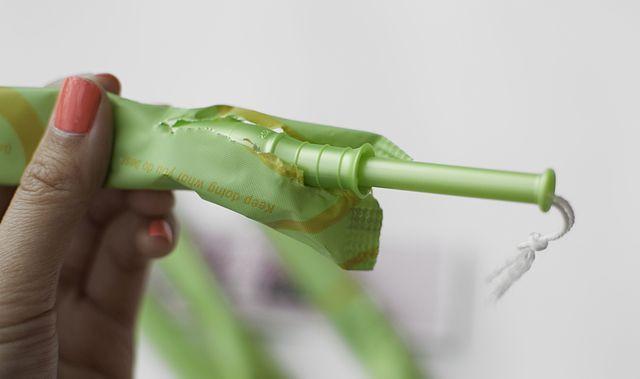Michigan Has Seen 5 Cases Of Toxic Shock Since December; Health Officials Warn Against Improper Tampon Use

It’s no outbreak, but a relatively large cluster of toxic shock cases have hit Michigan over a short span of time, leading public health officials to issue a cautionary reminder about the dangers of improper tampon use.
On Wednesday, the Michigan Department of Health and Human Services (MDHHS) announced it had identified five cases of tampon-associated Toxic Shock Syndrome (TSS) within the state since December of last year. For comparison, the MDHSS noted the annual average tally of TSS cases during the previous ten years was fewer than four. Though the cases were all nonfatal, it was earlier reported in mid-January that at least one victim, 15-year-old Rylie Whitten of Greenville, suffered severe complications and ended up hospitalized for more than two weeks.
“Although Toxic Shock Syndrome cases are rare, this recent cluster is an important reminder to always review product safety information,” said Dr. Eden Wells, chief medical executive with the MDHHS, in a statement.
TSS is the particularly nasty side effect of a relatively common infection by the bacteria Staphylococcus aureus (seen elsewhere in our nightmares as one of the bugs capable of being antibiotic-resistant but also as a harmless neighbor throughout our body). In most cases of TSS, it’s a specific toxin (TSST-1) produced by a certain strain of S. aureus that stirs up the trouble. While other S. aureus toxins can trigger TSS, TSST-1 is the source of all tampon-associated cases.
Under certain circumstances, such as someone wearing highly absorbent tampons for long lengths of time, that certain strain of S.aureus grows out of control and subsequently produces an excess of TSST-1 that eventually ends up in the owner’s bloodstream. From there, the toxin sends our immune system into overdrive, causing fever, a rapid drop in blood pressure (the titular shock), and, in the worst cases, complete organ failure. Of the five Michigan cases, four were traced specifically to the super absorbent Playtex Sport brand, and the other to the Kotex brand U.
While TSS can happen to women not using tampons and to men, it became synonymous with the sanitary product following the release of new super absorbent brands in the 1980s that triggered a substantial rise in TSS cases. Once the brands were taken off the market and consumers became more aware of the risks from leaving them in too long, TSS cases dropped like a stone as well. As previously reported by Medical Daily, though, there are still particularly devastating cases that crop up from time to time.
So how do you avoid TSS from tampons? The MDHSS advises that women buy tampons with the lowest amount of absorbency needed and to never leave one in for more than eight hours at a time.
Lastly, while similar in symptoms and mechanism, Toxic Shock Syndrome shouldn’t be confused for Toxic Shock-Like Syndrome (TSLS), since that’s actually caused by toxins released by streptococcal bacteria (hence the often-preferred name of streptococcal toxic shock syndrome these days). Unlike TSS, TSLS cases aren’t linked to tampon use.
Published by Medicaldaily.com



























